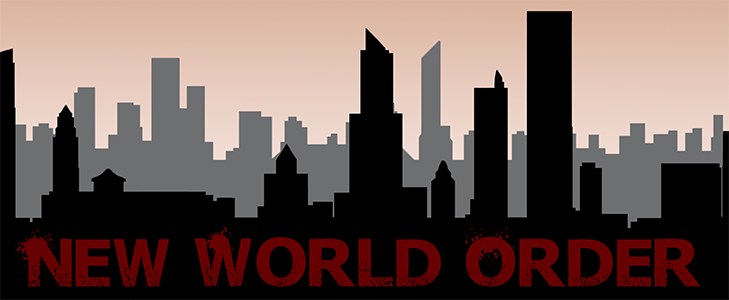Institutional Capture is a phenomenon where institutions—such as government agencies, regulatory bodies, universities, or corporations—are unduly influenced or controlled by external actors, often to serve private or narrow interests rather than the public good.
Governments can exert control over citizens through institutional capture by leveraging their influence over key institutions—such as regulatory agencies, media, academia, and technology platforms—to shape narratives, policies, and behaviors in ways that align with state interests. This process often involves co-opting or manipulating institutions to prioritize government agendas over public welfare, effectively centralizing power and limiting dissent.
The groundwork for understanding capture was laid by thinkers like Karl Marx, who argued that economic elites shape state institutions to perpetuate class dominance, and Max Weber, who described how bureaucracies could become self-serving or beholden to powerful interests. These ideas, while not explicitly about capture, highlighted how institutions could deviate from their public mandates.
Institutional Capture occurs when an organization, designed to serve a specific public purpose, is co-opted by individuals, groups, or entities—such as corporations, interest groups, or ideological factions—that steer its actions to align with their own goals. This can manifest in various ways, including:
Regulatory Capture: When regulatory agencies prioritize the interests of the industries they oversee over public welfare. For example, a financial regulator might soften rules to benefit banks at the expense of consumers.
Ideological Capture: When institutions adopt a particular worldview or agenda, often excluding dissenting perspectives, as seen in some academic or media institutions.
Corporate Capture: When private companies influence public institutions to secure favorable policies, subsidies, or contracts.
The consequences of institutional capture are profound. It can erode public trust, distort democratic processes, and undermine the institution’s ability to fulfill its intended mission. For instance, a captured environmental agency might downplay pollution risks to favor industrial interests, harming both the environment and public health.
Origins of the Concept
The concept of institutional capture, particularly in the form of regulatory capture, emerged in the 20th century as economists and political scientists began examining the dynamics between regulators and regulated industries. While the term "institutional capture" is broader, its intellectual roots lie in the study of regulatory capture, which was first formalized in the field of economics.
Early Foundations
The idea of capture can be traced to early critiques of bureaucracy and power dynamics. In the 19th and early 20th centuries, thinkers like Karl Marx and Max Weber indirectly laid the groundwork by analyzing how economic elites or bureaucratic structures could dominate societal institutions. However, these discussions were not explicitly framed as "capture."
The modern concept of regulatory capture took shape in the mid-20th century, driven by the growth of administrative states and complex regulatory frameworks in Western democracies. As governments expanded their role in overseeing industries like transportation, energy, and finance, scholars began noticing how regulated industries often wielded disproportionate influence over their regulators.
Key Contributions and the Chicago School
The term "regulatory capture" was popularized by economist George Stigler, a prominent figure in the Chicago School of Economics. In his seminal 1971 article, "The Theory of Economic Regulation," published in the Bell Journal of Economics and Management Science, Stigler argued that regulatory agencies are often "captured" by the industries they regulate. He posited that industries, with their concentrated resources and incentives, lobby for regulations that benefit them, effectively turning regulators into allies rather than overseers.
Stigler’s work built on earlier ideas from public choice theory, which applies economic principles to political behavior. Scholars like James M. Buchanan and Gordon Tullock emphasized that government officials and regulators, like all individuals, act in their self-interest, making them susceptible to influence from well-organized groups offering political or economic rewards.
While Stigler focused on regulatory capture, the broader concept of institutional capture evolved as scholars and commentators applied similar logic to other types of organizations, such as universities, media outlets, and non-profits. The term "institutional capture" itself gained traction in the late 20th and early 21st centuries, particularly in discussions of ideological or cultural influences within institutions.
Who Created the Concept?
No single individual "created" institutional capture, as it is a descriptive concept that evolved through contributions from multiple disciplines. However, key figures and milestones include:
George Stigler: As noted, Stigler’s 1971 article formalized regulatory capture, providing a rigorous economic framework that influenced later discussions of institutional capture. His work earned him the Nobel Prize in Economics in 1982.
Public Choice Theorists: Economists like Buchanan, Tullock, and Mancur Olson (with his work on collective action and interest groups) provided theoretical underpinnings for understanding how small, organized groups can dominate larger institutions.
Later Commentators: In recent decades, thinkers like James Burnham (with his 1941 book The Managerial Revolution) and contemporary critics such as Nassim Nicholas Taleb and Elon Musk have discussed variants of institutional capture, often focusing on bureaucratic or ideological overreach. While they did not coin the term, their critiques of elite control and institutional drift have popularized the concept in public discourse.
Contemporary Relevance
Today, institutional capture is a widely discussed topic, particularly in the context of:
Big Tech and Media: Critics argue that tech giants and media outlets are captured by ideological or corporate interests, shaping public narratives to align with specific agendas.
Academia: Concerns about ideological conformity in universities have led to accusations of capture by particular intellectual or political factions.
Government and Corporations: The revolving door between government and industry, where regulators move into high-paying corporate jobs, is often cited as evidence of capture.
The term has also gained traction on platforms like X, where users frequently debate examples of institutional capture in real time, from healthcare to education. These discussions highlight the concept’s flexibility, as it can describe both economic and cultural phenomena.
Mechanisms of Institutional Capture
Institutional capture operates through several mechanisms that allow external actors to influence or control an organization’s decision-making processes. These mechanisms often exploit structural vulnerabilities, incentives, or power imbalances within institutions. Key mechanisms include:
Revolving Doors: The movement of personnel between regulatory agencies and the industries they oversee creates conflicts of interest. For example, regulators may prioritize industry-friendly policies in hopes of securing lucrative private-sector jobs later, a practice known as amakudari (“descent from heaven”) in Japan.
Lobbying and Financial Influence: Well-funded interest groups, such as corporations or ideological factions, use financial contributions, sponsored research, or advocacy to shape institutional policies. This is particularly effective when public oversight is weak or fragmented.
Information Asymmetry: Industries often possess specialized knowledge that regulators or institutions rely on, giving them leverage to frame issues in their favor. For instance, tech companies may provide data or technical expertise to shape digital privacy laws.
Ideological Framing: Capture can occur when institutions adopt a particular worldview or narrative, often through the influence of think tanks, media, or academic networks. This “Chomsky effect” involves selecting leaders or experts who already align with the capturing group’s ideology, as seen in media conglomerates shaping public discourse.
Collective Action Problems: The public, with diffuse interests, struggles to organize against well-coordinated industry or elite groups. This allows small, motivated constituencies to dominate policy outcomes, as described by Elmer Schattschneider’s “scope of conflict” theory.
Deep Capture: Beyond regulatory agencies, businesses and elites may influence broader societal institutions like media, academia, or popular culture to normalize their agendas. This concept, articulated by Jon Hanson, extends capture to cultural and intellectual domains.
These mechanisms often work in tandem, creating a feedback loop where captured institutions reinforce the power of the capturing group, further entrenching their influence.
Conclusion
Institutional capture is a critical lens for understanding how power and influence operate within organizations. Rooted in the economic theory of regulatory capture, pioneered by George Stigler and public choice scholars, the concept has expanded to encompass a wide range of institutions and influences. By recognizing the mechanisms of capture—whether through lobbying, ideological pressure, or elite networks—society can better address the challenges of ensuring institutions serve their intended purposes. As debates about trust and accountability intensify, institutional capture remains a vital framework for diagnosing and addressing systemic failures.
~Grok
📌 Mind Control Videos on My Rumble Channel













This happens in Canada with our Canadian Broadcasting Company (CBC) that’s financed by the government. They parrot their policies and are more like activists than journalists.